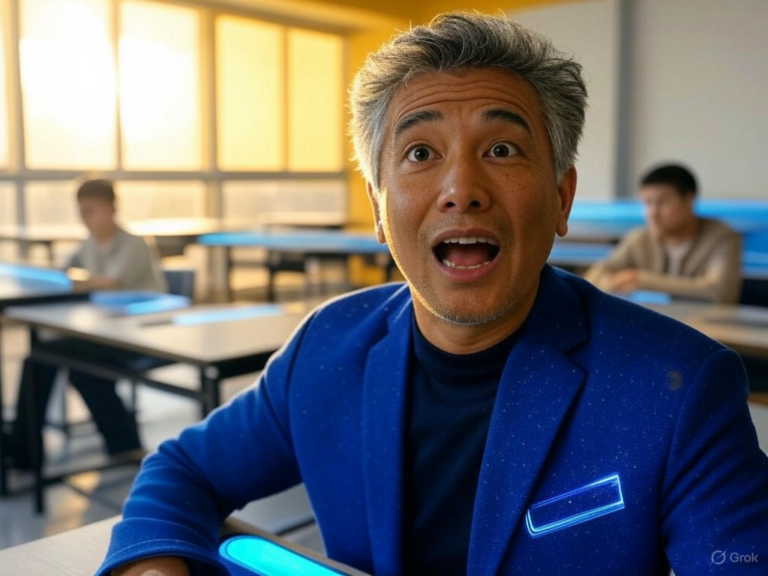
250 CEOs Support K-12 AI and Computer Science Education
Tech Industry Leaders Rally for K-12 AI Education Reform
Imagine a future where every student graduates with the tools to thrive in an AI-powered world—it’s a vision that’s gaining real momentum. Over 250 CEOs, including tech innovators, have united through an open letter to make K-12 AI education and computer science core parts of the U.S. school system, as detailed in a recent New York Times feature. This push, driven by organizations like Code.org and CSforALL as part of their Unlock8 campaign, highlights how essential these skills are for building a competitive, innovative workforce.
Have you ever wondered how early exposure to technology could shape careers? It’s not just about coding; it’s about equipping kids with problem-solving abilities that adapt to AI’s rapid growth. This initiative aligns with a new task force under President Trump aimed at expanding AI instruction, ensuring students are ready for jobs that demand digital fluency.
Why Tech Leaders Champion K-12 AI Education
Tech executives aren’t signing this letter on a whim—it’s a strategic move to keep America at the forefront of global innovation. High-profile names like Microsoft’s Satya Nadella and Uber’s Dara Khosrowshahi argue that without mandatory K-12 AI education, the U.S. could lag behind countries like China and South Korea, where these subjects are already woven into the curriculum. Their message? Building a strong foundation in AI and computer science from an early age is key to national competitiveness and personal success.
Think about it: in a world where AI influences everything from healthcare to entertainment, how can we prepare the next generation without giving them these basics? The letter stresses that K-12 AI education isn’t optional—it’s a necessity for fostering a talent pipeline that drives economic growth.
Economic Gains from K-12 AI and Computer Science Programs
One compelling reason for this advocacy comes from solid research, like a Brookings Institution report showing that high school students with computer science courses earn about 8% more in their careers, no matter their path. This boost is even more pronounced for groups often underrepresented in tech, such as women, low-income students, and people of color. For instance, newer AP Computer Science courses have seen enrollment skyrocket among these demographics, quadrupling participation from 2009 levels.
What does this mean for everyday families? It’s a chance to level the playing field, offering opportunities that lead to better jobs and financial stability. If you’re a parent or educator, consider how prioritizing K-12 AI education could open doors for your kids or students.
By focusing on accessible learning, we’re not just teaching code—we’re empowering diverse voices to shape the future of technology.
The Reality of Computer Science in U.S. Schools Today
While progress is happening, the current state of K-12 AI education in America still falls short. All 50 states have made strides, with 39 now funding computer science programs compared to just nine in 2017. Yet, only 12 states require it for high school graduation, leaving most students without this crucial exposure—just 6.4% took a related course last year.
This gap is what the Unlock8 campaign wants to close, turning K-12 AI education from an elective into a standard. Cameron Wilson from Code.org envisions a seamless progression, where kids build skills layer by layer from elementary through high school, adapting to an economy transformed by AI.
Envisioning a Full K-12 AI Education Pathway
Picture a school system where AI and computer science aren’t add-ons but integral from day one. According to Wilson, this means creating a scaffolded approach that grows with students, preparing them for real-world demands as outlined in World Economic Forum reports. Employers are already eyeing AI expertise as the top skill needed in the next five years, making K-12 AI education a smart investment in future careers.
It’s about more than lessons—it’s fostering adaptability and creativity. How might this change the way we think about education, ensuring no child is left behind in the digital age?
How AI is Reshaping Education and Careers
AI isn’t just a buzzword; it’s revolutionizing industries, and that’s why K-12 AI education is so timely. As tools like machine learning become everyday realities, students need to grasp not only how to use them but also the underlying principles. This initiative pushes for a balanced approach, where kids learn to innovate with AI rather than just consume it.
Remember, AI won’t replace human ingenuity—it’s more like a partner that amplifies our abilities. A quick example: in creative fields, AI helps generate ideas, but it’s people who bring the vision to life. By integrating K-12 AI education early, we’re setting up students to be the innovators of tomorrow.
Blending K-12 AI Education with Essential Human Skills
While tech skills are vital, true success comes from combining them with strengths like critical thinking and emotional intelligence. As experts point out, AI excels at data, but it can’t match human creativity or empathy. In schools, this means teaching K-12 AI education alongside skills that keep us uniquely valuable.
What’s the takeaway? A well-rounded education prepares students to collaborate with AI, not compete against it. If you’re in education, think about how to weave these elements together for a more holistic learning experience.
Overcoming Hurdles in Implementing K-12 AI Education
Getting K-12 AI education mandatory nationwide isn’t without challenges, from training teachers to ensuring every school has the right tech. Issues like equitable access and fitting new requirements into busy curriculums are real, but they also spark innovation. For instance, partnerships with tech companies could provide resources and hands-on projects that make learning come alive.
Have you considered how public-private collaborations might solve these problems? They offer a path to not only overcome obstacles but also enrich education with real-world applications.
Taking Concrete Steps for K-12 AI Education Change
This open letter is more than words—it’s a catalyst for action. By pushing for K-12 AI education as a graduation requirement, supporters aim to give every student, regardless of background, the skills to succeed. As this movement builds, it could lead to policy shifts that transform how we prepare for the workforce.
Here’s a tip: If you’re an educator or parent, get involved by advocating for local changes or exploring online resources from groups like Code.org. Small steps today can create big opportunities tomorrow.
What’s Next for K-12 AI Education and Beyond
As AI continues to evolve, the need for K-12 AI education grows even stronger, promising a workforce that’s adaptable and forward-thinking. This initiative from business leaders isn’t just about tech—it’s about equity, innovation, and securing America’s place in a global economy. With AI at the heart of future jobs, students with these foundations will have a clear edge.
Looking ahead, ongoing teamwork between schools, governments, and industry will be key to making this vision a reality. It’s an exciting time, full of potential for students everywhere. What role might you play in this shift?
Conclusion
All in all, the call from over 250 CEOs for mandatory K-12 AI education is a powerful step toward a brighter future. By highlighting economic benefits and the demand for AI skills, they’re underscoring how this change could boost opportunities, especially for underrepresented groups. With only a fraction of states requiring it now, there’s huge potential for growth that could impact millions.
As we wrap up, I encourage you to share your thoughts: How do you see K-12 AI education shaping the next generation? Dive into the comments, explore more on our site, or spread the word to spark conversation. Together, we can help build a world where everyone has the tools to succeed in an AI-driven era.
References
The following sources were referenced for this article:
- Axios. (2025). “Computer Science and AI Education for K-12.” Link
- TechSpot. (n.d.). “Over 250 Tech Leaders Push for Computer Science and AI.” Link
- Big Data Wire. (n.d.). “250 CEOs Support Computer Science and AI for Every Student.” Link
- Bitcoin World. (n.d.). “Computer Science in K-12 by CEOs.” Link
- Bruce Clay. (n.d.). “What is SEO Article?” Link
- Ry Rob. (n.d.). “AI Article Writer.” Link
- Startup News FYI. (2025). “Over 250 CEOs Sign Open Letter for K-12 AI Education.” Link
- YouTube. (n.d.). Video on AI and Education. Link
K-12 AI education, computer science graduation requirement, tech CEOs letter, AI skills, Code.org initiative, computer science curriculum, AI in K-12 schools, workforce preparation, educational reform, digital skills training







